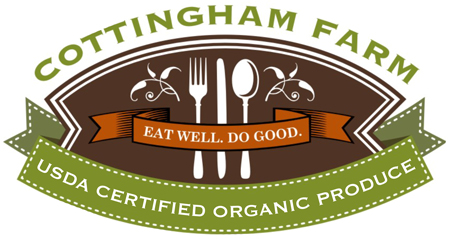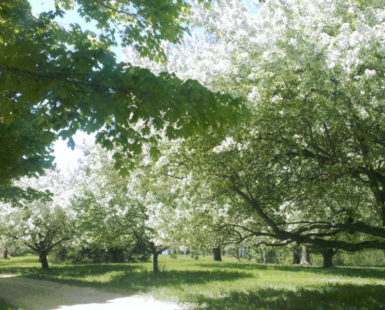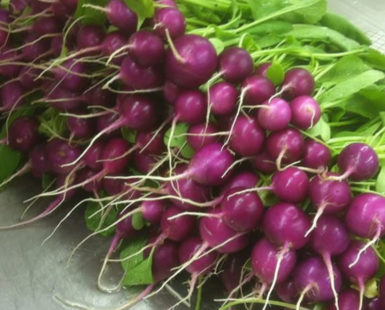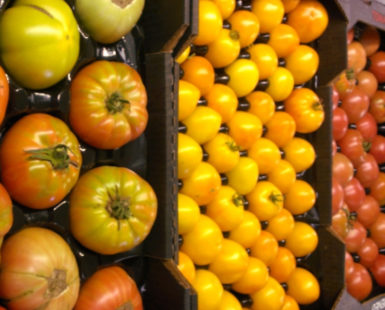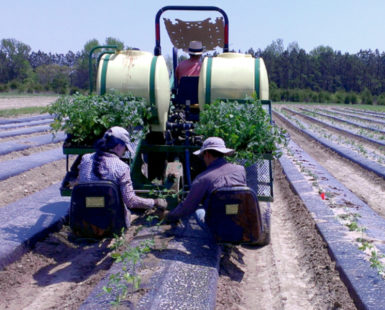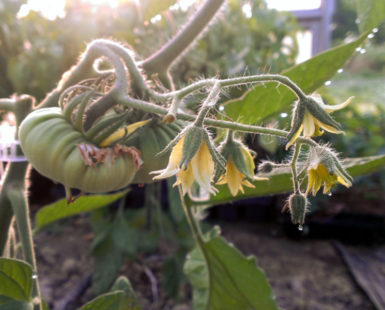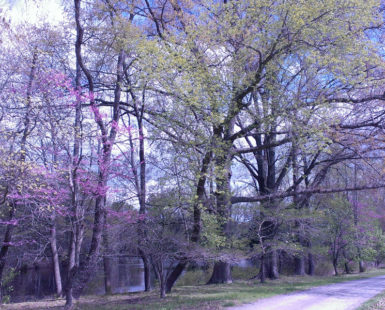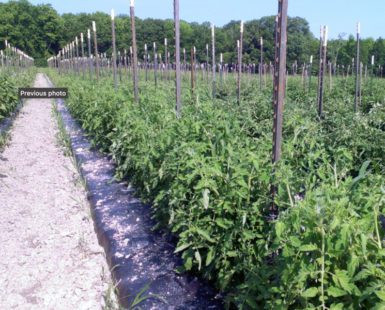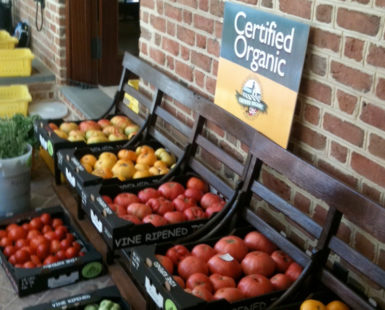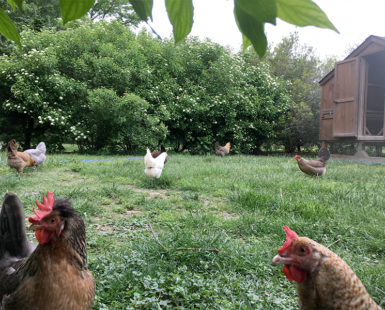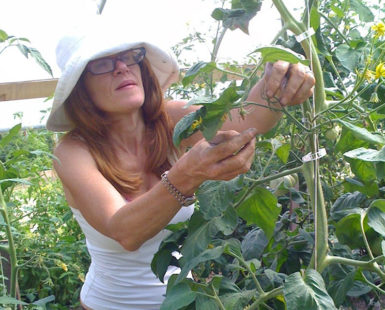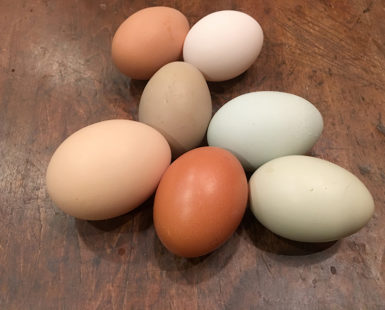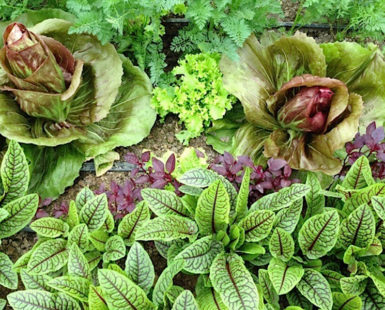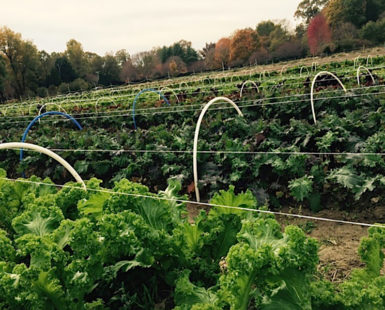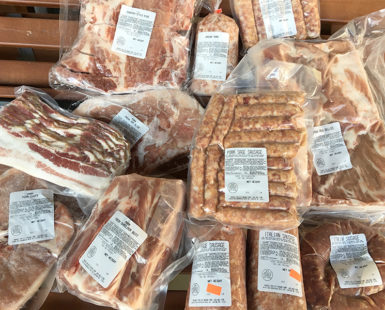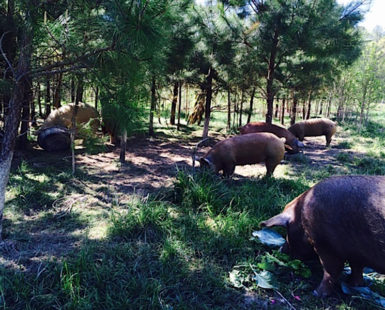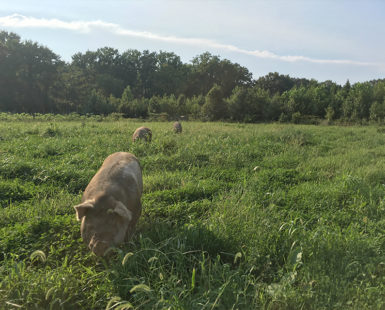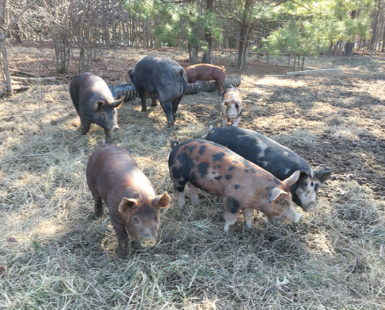
Our certified organic produce, and pastured heritage (strictly organic-fed) pork, chicken and eggs are available 52 weeks a year for pick-up at the Farm (Tu, Th and Sat) or at the Saturday farmers’ markets in both Easton and St. Michaels. Everything we grow is available to you a la carte!
History of the Farm
Cottingham Farm in Talbot County, Maryland has a long and a short history. The land was settled in 1658 by Isaac Abraham who arrived from England on the condition of a plantation to farm tobacco on fifty acres.
Jonathan and William Shaw, from “Cottingham” in Yorkshire England, claimed an adjacent 900 acres in 1662 and called it Cottingham. Tobacco grew here in colonial times, likely followed by wheat to feed General Washington’s Continental Army, followed by fruit tree orchards through the early 1900s, and supplanted by feed corn and soy in the 1940s. In this new century, the land (now about 160 acres) is being transitioned to healthful sustainably grown, and locally distributed fruits, vegetables, and herbs. We grow our produce using organic methods, with no synthetic fertilizers, pesticides, or herbicides, surrounded by buffers of wildlife habitat and buffers for the Chesapeake Bay. We like to call it Real Food.
The summer of 2008 was our first experience with growing for market. Our heirloom black, pink, orange, and red tomatoes were invited to a wedding, so we considered our first year a grand success!
Since 2010, our produce has been certified organic under the USDA National Organic Program. That means we are prohibited from using chlorpyrifos (which unbelievably is in conventional strawberries, apples, peaches, green beans, and broccoli tho it damages children’s brains), neonicotinoids which are killing our pollinators (one kernel of corn can kill a songbird), and glyphosate (which is applied to a million acres of Maryland crops to control weeds even tho it has been linked to non-Hodgkins lymphoma and a host of other serious diseases). We use a host of physical, planning, labor, and biological methods to control disease, pests, and weeds without harmful synthetic fertilizers and we use compost and other inputs instead of synthetic fertilizers.
In 2017, recognizing the power of having Mother Nature on our team, we have moved to producing more nutrient-dense foods with less conventional production methodologies, using humates and mycorrhizal fungi to balance the bacterial-fungal balance in the soil, adding animals to the farm, and restoring minerals missing in soil and food. You can now enjoy our strictly organic-fed, rotationally pastured, heritage pork (Berkshire) and chicken (Freedom Ranger) and their eggs. Best of all, our perennial buffer strips, wetlands and woodlands, and organically maintained cropland and pastures store carbon in the soil. This kind of regenerative agriculture has the potential to store all of our current carbon emissions in the soil beneath our feet!

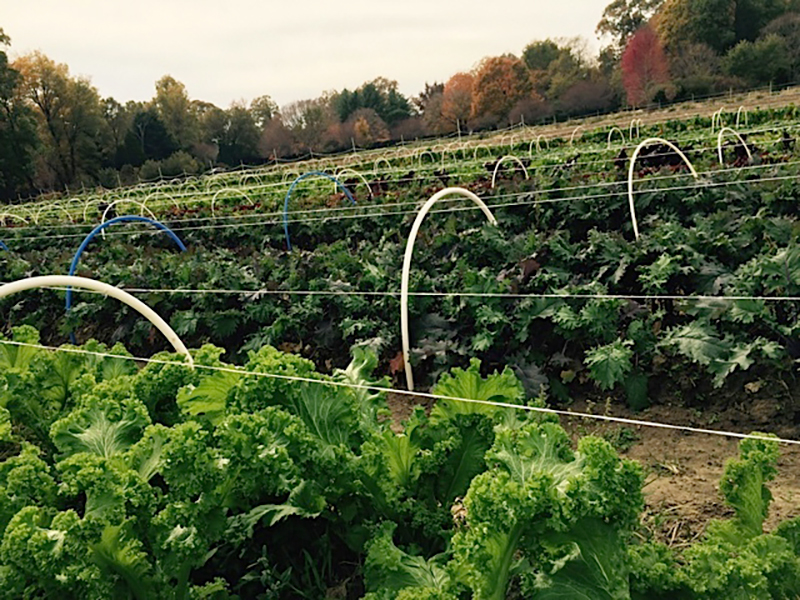
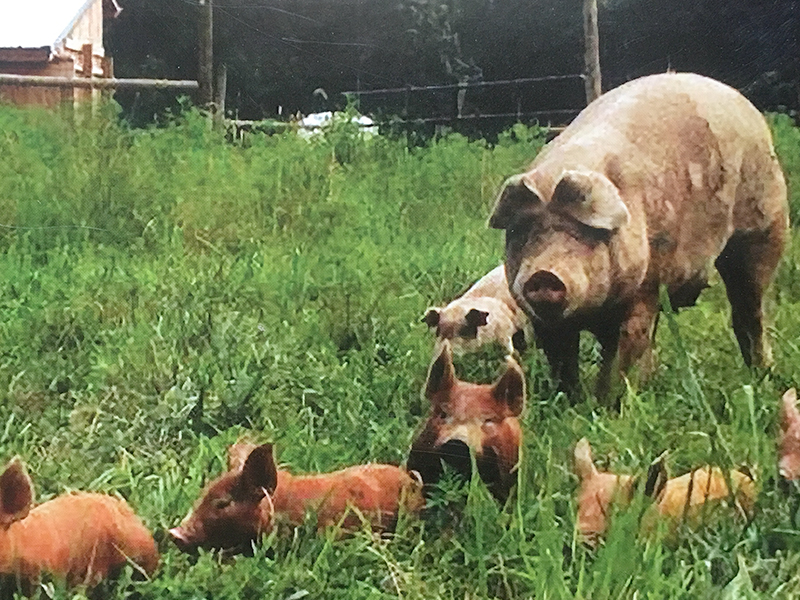
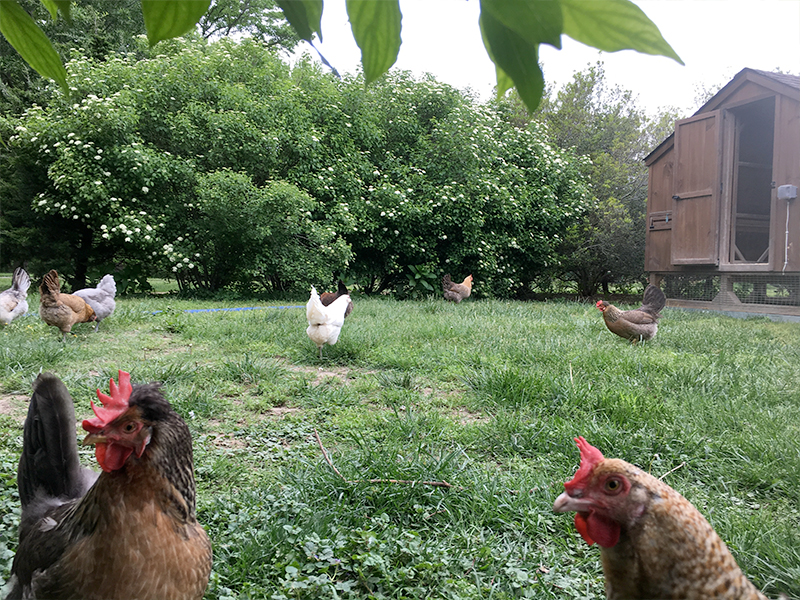
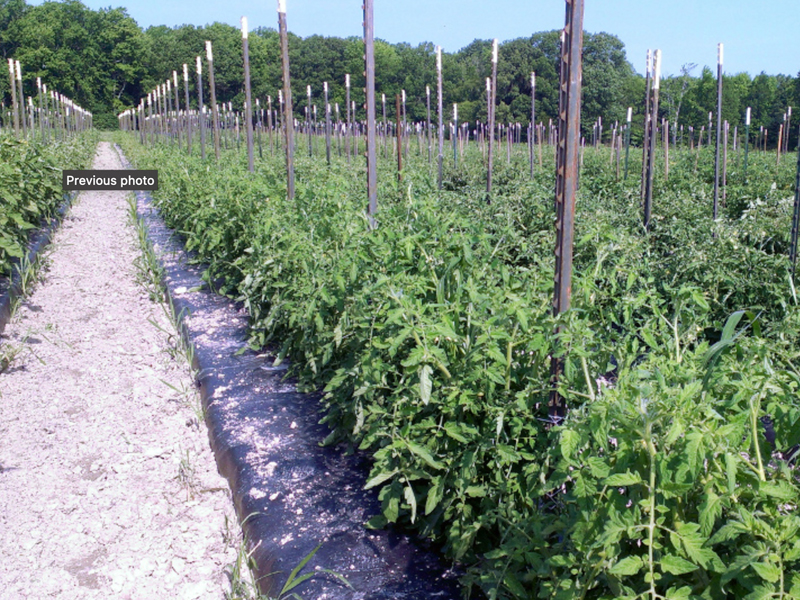

Our Philosophy
We believe we must return to the times of organically growing healthy and nutritious food for people to eat – and there is no better place for this to happen than on Maryland’s Eastern Shore which lies in the Chesapeake Bay watershed — which has an agrarian history and reputation — and is within a short driving distance of some of our favorite metropolitan centers in addition to our own small Eastern Shore towns. Organic food is healthier for us because it is free of synthetic pesticides, herbicides and fertilizers and because there is significant evidence that it contains higher levels of nutrients. Further, we select for nutrient value and taste rather than for transportability, uniformity of size, and shelf life.
In addition to providing more nutritious food, this type of farming creates jobs (it is labor intensive rather than reliant on chemicals), it frees up land for implementation of good environmental practices (like buffer strips, cover crops and fallow periods), it can help us grow a Maryland economy (because Marylanders will be paying Marylanders rather than Californians, Floridians, Canadians and Mexicans to grow our food for us), and it can even have, in the collective sense, an impact on American health care costs as well as on the tremendous energy costs of our existing industrial agricultural model (under which the average food miles traveled by your food is 1,200 miles – and 1,500 miles if it is fresh produce). Most importantly for the long haul (think children and grandchildren) truly regenerative agriculture has the potential to store carbon – up to 10 metric tons of carbon per acre per year – and reverse climate change.
In order to have a positive impact on human and animal health, the Bay, and the climate, we have adopted a number of practices including the following:
(i) We are a USDA certified organic producer of vegetables and herbs. (Our certifier is the Maryland Department of Agriculture.) We purchase and use only certified organic seeds, compost, and fertilizers. We use no synthetic fertilizers, pesticides, herbicides or fungicides on our fields or our products. Because pesticides are not used, our food crops produce their own natural pesticide – antioxidants.
(ii) We grow many heirloom vegetables where available in order to preserve disappearing varieties which have been grown for flavor and nutritional value – like the Spears Tennessee Green tomato grown by the Spears family in Tennessee, or the Peacevine cherry tomato which is so named because of its high levels of calming amino acids.
(iii) We have installed on the Farm over fifty acres of Conservation Reserve practices including an eighteen acre wetland which is a habitat for teal, black duck and other disappearing native waterfowl; thirty acres of warm season grass buffers around all fields to prevent water, sediment, nitrogen and phosphorous runoff as well as provide habitat for the disappearing native quail; two acres of native trees and shrubs on the water’s edge; over twenty acres of cover crops; and almost ten acres of meadows.
(iv) We regularly conduct soil tests with the goal of not applying excess nitrogen, phosphorus or major or micro nutrients on the land; plant cover crops such as crimson clover, rye and barley to absorb excess nutrients and prevent runoff, and plant green manure crops, all so that we can build healthy soil instead of growing food in soil that has been depleted by synthetic additives.
(v) In an effort to reduce the average food-miles traveled in this country, we do not sell our foods more than one hundred miles from the Farm and we require our buyers to do the same.
(vi) We use 100% recycled and recyclable plastic pint and quart containers, and our cardboard boxes and other produce containers are returned by our customers for reuse by us.
(vii) We intentionally use varieties and growing methods which will increase the level and diversity of macro, micro and phytonutrients in our foods. (Our nutrient dense foods weigh more now than they used to!)
(viii) We are focused on increasing the soil organic carbon (SOC) and organic matter (OM, of which 65% is carbon) in order to help reverse climate change. We do this by maximizing the acreage in perennial plantings and habitat such as wetlands, woods, animal pasture, tree and shrub buffers, multi-year cover crops, and arm season grass buffer strips). These practices store 3-5 (even 10-12) tons of carbon every year -versus the more commonly practiced “no-till” and short-lived winter “cover crops” which store as little as 1/4 ton.
